-202403121604.gif)



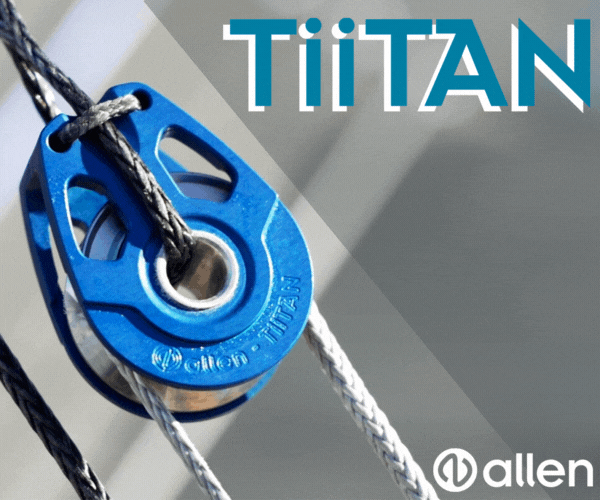




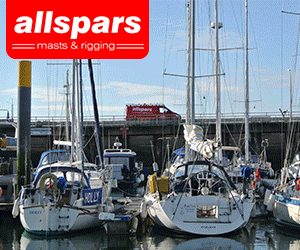
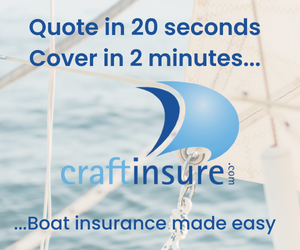


Boats for sale
| Laser XD 203301 Upminster |
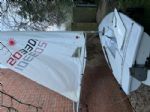 |
| J24 (Sail No. 4239) Dartmouth |
 |
| Laurent Giles 'Jolly Boat' Exeter |
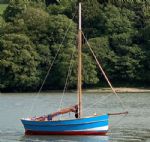 |
List classes of boat for sale |
The formula to height |
Post Reply 
|
Page 12> |
| Author | |
ClubRacer 
Far too distracted from work 
Joined: 26 Sep 15 Online Status: Offline Posts: 210 |
 Post Options Post Options
 Quote Quote  Reply Reply
 Topic: The formula to height Topic: The formula to heightPosted: 28 Aug 18 at 7:42pm |
|
what is the key to pointing high when you've got sufficient wind over the sails that flow isn't important
jib car positions/jib luff tension/jib leech tension Mast rake/kicker/downhaul
what does each of these do to your pointing |
|
 |
|
Sam.Spoons 
Really should get out more 
Joined: 07 Mar 12 Location: Manchester UK Online Status: Offline Posts: 3398 |
 Post Options Post Options
 Quote Quote  Reply Reply
 Posted: 28 Aug 18 at 9:57pm Posted: 28 Aug 18 at 9:57pm |
|
It's different for every boat so look at the CA tuning guides and tips from their top sailors. But, for detailed, non class specific advice buy a copy each of "Start To Win" by Eric Twiname and "Expert Dinghy Racing" by Paul Elvstrom.
FWIW jib car position affects jib leech tension and twist, set it so the twist matches the mainsail and adjust the slot to suit, jib luff is usually dictated by rig tension so see above, more rake is faster upwind but slower down, cunningham (downhaul) depowers and flattens the top of the sail by bending the mast, kicker increases leech tension and reduces twist (so more power offwind) but upwind bends the mast which depowers the sail and, depending on the class, you'll be controlling mainsail leech tension with the mainsheet so the kicker will be slack or with the kicker with the mainsheet controlling sheeting angle only. Every class has it's foibles and needs specific advice.
Edited by Sam.Spoons - 28 Aug 18 at 10:00pm |
|
|
Spice 346 "Flat Broke"
Blaze 671 "supersonic soap dish" |
|
 |
|
Chris 249 
Really should get out more 

Joined: 10 May 04 Online Status: Offline Posts: 2041 |
 Post Options Post Options
 Quote Quote  Reply Reply
 Posted: 29 Aug 18 at 1:16am Posted: 29 Aug 18 at 1:16am |
|
As SS said, look up the class guides. As very general rules;
jib car positions - class dependent, as it relates closely to the slot which relates to hull shape, permitted sheeting angle, sail depth etc. jib luff tension - easing luff tension allows for a flatter entry because the point of maximum draft moves aft, therefore increasing pointing. jib leech tension - as with car position. Mast rake - less rake equals higher pointing generally, but there's a lot of inter-relationship with other factors. kicker - class dependent. On some boats, tighter kicker can tighten the leach and flatten the sail and allow you to point higher. On others, tighter kicker bends the mast and allows the mid leach to sag open. downhaul - less equals higher. The draft moves aft, flattening the entry and tightening the leach. |
|
|
sailcraftblog.wordpress.com
The history and design of the racing dinghy. |
|
 |
|
Rupert 
Really should get out more 
Joined: 11 Aug 04 Location: Whitefriars sc Online Status: Offline Posts: 8956 |
 Post Options Post Options
 Quote Quote  Reply Reply
 Posted: 29 Aug 18 at 7:02am Posted: 29 Aug 18 at 7:02am |
|
And spot the lifts.
|
|
|
Firefly 2324, Puffin 229, Minisail 3446 Mirror 70686
|
|
 |
|
Sam.Spoons 
Really should get out more 
Joined: 07 Mar 12 Location: Manchester UK Online Status: Offline Posts: 3398 |
 Post Options Post Options
 Quote Quote  Reply Reply
 Posted: 29 Aug 18 at 9:54am Posted: 29 Aug 18 at 9:54am |
|
BTW, the key is VMG which is a balancing act between pointing angle and speed, too high and the extra angle isn't enough to compensate for loss of speed, too low and the higher speed can't make up for the greater distance travelled.
Apologies if you already understand this (which I suspect you may well).......
|
|
|
Spice 346 "Flat Broke"
Blaze 671 "supersonic soap dish" |
|
 |
|
Guests 
Guest Group 
|
 Post Options Post Options
 Quote Quote  Reply Reply
 Posted: 29 Aug 18 at 9:58am Posted: 29 Aug 18 at 9:58am |
|
anything which narrow the angle of attack is good, but the trade off is that many of these things also move the draft further back, close the slot and hook the leech. This stops the air leaving the aft of the rig efficiently, and chokes the sail, which will harm pointing (and massively speed).
In practice, a lot of it is feel. There is a very fine line on slower dinghies between VMG and too high.
Edited by mozzy - 29 Aug 18 at 6:55pm |
|
 |
|
davidyacht 
Really should get out more 
Joined: 29 Mar 05 Online Status: Offline Posts: 1345 |
 Post Options Post Options
 Quote Quote  Reply Reply
 Posted: 29 Aug 18 at 10:35am Posted: 29 Aug 18 at 10:35am |
|
In the original post, it is unclear whether you are looking for the ability to point high for short periods, or whether you have an inherent pointing problem. If you are looking for short term pointing ... to lay a mark or squeeze another boat, then probably best to look at the controls and sheets to find a solution. However if you feel that the boat simply doesn’t point, then you probably need to look at fundamentals ... such as mast set up which the tuning guides tend to cover well. Also consider the condition and symmetry of your foils. Sail upright and minimise rudder movements. In the Solo it pays to let a little foot off, and pull on some kicker, to get the lower leech to stand up if I want to point high. In the Yawl, similar plus sheeting the jib hard to flatten the entry. Worth noting that one of the easiest ways of getting past a group of back markers to windward (or leeward) is to crack off a little and sail through their lee. |
|
|
Happily living in the past
|
|
 |
|
fab100 
Really should get out more 

Joined: 15 Mar 11 Online Status: Offline Posts: 1005 |
 Post Options Post Options
 Quote Quote  Reply Reply
 Posted: 29 Aug 18 at 12:00pm Posted: 29 Aug 18 at 12:00pm |
|
My favourite answer to "how can I point higher?" is "buy a longer tiller extension"
Michael McNamara in his talk at the dinghy show this year suggested the windward tell-tales need to be pointing vertically, not streaming horizontally - doing so gives a few degrees of extra height. Often the elephant in room, when it comes to pointing is leeway. Ultimately, it's not which direction the boat is aimed but where it actually goes. The boat not being held flat, plate not fully down or stalled out, butting into on-coming chop and more all conspire to add leeway and result in failing to hold a lane. |
|
 |
|
Mike Holt 
Groupie 
Joined: 29 Nov 09 Location: United States Online Status: Offline Posts: 58 |
 Post Options Post Options
 Quote Quote  Reply Reply
 Posted: 29 Aug 18 at 1:58pm Posted: 29 Aug 18 at 1:58pm |
|
Height is only really important off of a start line and when trying to hold a lane, as others have said VMG is the most important factor. Height generally comes with speed and flow over the foils. So pay as much attention to what is going on in the water as in the air.
|
|
 |
|
iGRF 
Really should get out more 

Joined: 07 Mar 11 Location: Hythe Online Status: Offline Posts: 6496 |
 Post Options Post Options
 Quote Quote  Reply Reply
 Posted: 29 Aug 18 at 4:25pm Posted: 29 Aug 18 at 4:25pm |
|
There's an old saying, where the head goes the body follows and until I once followed a really good lass in a Europe up a beat and then realised that there is no difference between the way I sail a board and the correct way to sail a dinghy, I didn't think it applied.
But whoever back there said about feel, that's the answer and even for someone like me who lives by feel, on sail craft, no tel tales, no little flag thing on top of the mast, it take a while to bed into a boat they are so much deader by comparison to real sailing on boards. But having said that, twist the upper half of your body and look upwind at the same time as loosening the grip on the wiggle thing and let the boat 'hunt' for you, works wonders. Providing of course you have a well set up boat that isn't all weather helm like my little sailing joy the Solution. The Alto was equally good as I imagine would be a 505, and surprisingly if you could stop it rocking and rolling that RS200 was nicely balanced and not bad at all upwind. Now my little Mini sprint will point like a demon - and then slip sideways because it has a crap centreboard, so you have to dig the rail of the boat in a bit to try and stop that. Neither did I rate the Blaze in light weather, always thought it was under foiled,now a Phantom.. just sit there and enjoy your pies, it does all the work. Moral of the tale, they are all different but You have to learn first so you can tell the difference and that's taken me the best part of ten years.. And now I've got a boat which if you point it you die (Farr 3.7)so you have to foot it off, sail under the damned Lasers, let some speed build then the foils do the work and if there's not enough wind to get on the wire - sail something else.  Edited by iGRF - 29 Aug 18 at 4:31pm |
|
 |
|
Post Reply 
|
Page 12> |
| Forum Jump | Forum Permissions  You cannot post new topics in this forum You cannot reply to topics in this forum You cannot delete your posts in this forum You cannot edit your posts in this forum You cannot create polls in this forum You cannot vote in polls in this forum |
Bulletin Board Software by Web Wiz Forums® version 9.665y
Copyright ©2001-2010 Web Wiz
Change your personal settings, or read our privacy policy
Copyright ©2001-2010 Web Wiz
Change your personal settings, or read our privacy policy











 Printable Version
Printable Version Delicious
Delicious Digg
Digg Facebook
Facebook Furl
Furl Google
Google MySpace
MySpace Newsvine
Newsvine reddit
reddit StumbleUpon
StumbleUpon Twitter
Twitter Windows Live
Windows Live Yahoo Bookmarks
Yahoo Bookmarks Topic Options
Topic Options